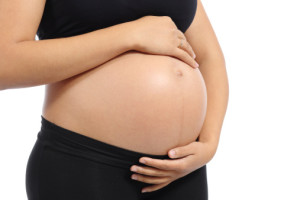WHO: Reduce Unnecessary C-Sections

Earlier in April 2015, the World Health Organization (WHO) issued a cautionary statement that warns of an epidemic of unnecessary caesarean sections, which are particularly prevalent in middle-and high-income countries. Parents of children who have been diagnosed with birth injuries are quite often all too familiar with C-section mistakes. Often, birth injuries occur when obstetric personnel fail to perform a C-section in a timely manner, despite indicators of fetal distress. However, this latest warning was issued with regard to the use of C-sections when they are not indicated.
WHO supports medically necessary C-sections
When releasing its latest warning, WHO emphasized that it does not intend to discourage the use of medically necessary C-sections. In fact, the organization wholeheartedly endorses the use of C-sections to save the life and health of mother and/or baby. However, WHO warns that overuse of the procedure can place mother and baby at risk of short-term and long-term medical complications.
Before issuing the health warning, WHO appears to have given considerable thought to the ideal rate of C-sections. Since 1985, health professionals have proposed that the ideal rate for C-sections is between 10 and 15 percent. Health experts rely on clinical studies to analyze C-section rates. They found that when the rate of C-sections dips below 10 percent, as it has in Africa, this trend is associated with greater maternal and infant mortality.
However, when C-section rates are a great deal higher than 10 percent, there is no clinical evidence to support that maternal and fetal health is benefited. Instead, there is a possibility that health complications may increase.
WHO director explains risks
WHO’s press release noted that high rates of medically unnecessary caesarean sections can have adverse effects on both a societal and individual basis. Because C-sections are more costly than vaginal births, unnecessary C-sections can strain an overburdened health system. Additionally, while C-sections are widely regarded as a generally safe and routine surgery, there is always the potential for complications.
“The chance of a complication is not that high, but the risk, the mortality can be very serious. You have like life threatening complications due to bleedings, most of them, but also other complications like thromboembolic risks are higher after surgery than after a vaginal delivery,” said Dr. Marleen Temmerman, the director of the Department of Reproductive Health and Research at WHO.
Dr. Temmerman went on to voice her concerns that lifestyle considerations have played a significant role in the drastic increase in medically unnecessary C-sections.
“For a gynecologist actually it is easier to do a Caesarean section sometimes because you can plan your life… Every day you do two Caesareans-one at nine, one at 10 in the theater-no stress, no night duties, no call in emergencies or fetal distress or bleedings or whatever,” she said.
Proposed adoption of the Robson classification
WHO points to a lack of an internationally accepted classification system as being one problem that hinders reproductive healthcare improvements. WHO has proposed that the Robson classification be widely adopted. The Robson classification identifies 10 groups to determine which expectant mothers might require a C-section for medically acceptable reasons. The sorting of expectant mothers into these 10 groups would be based on factors such as gestational age, reproductive history, and the position of the fetus. Dr. Temmerman has urged hospitals to implement the Robson classification as soon as possible to reduce the rate of C-section mistakes.
- Voice of America, WHO Warns Against Unnecessary C-Sections, http://www.voanews.com/content/who-warns-against-c-sections-when-not-medically-needed/2715429.html
- WHO, Caesarean sections should only be performed when medically necessary, http://www.who.int/mediacentre/news/releases/2015/caesarean-sections/en/

 Resources
Resources
 Resources
Resources

